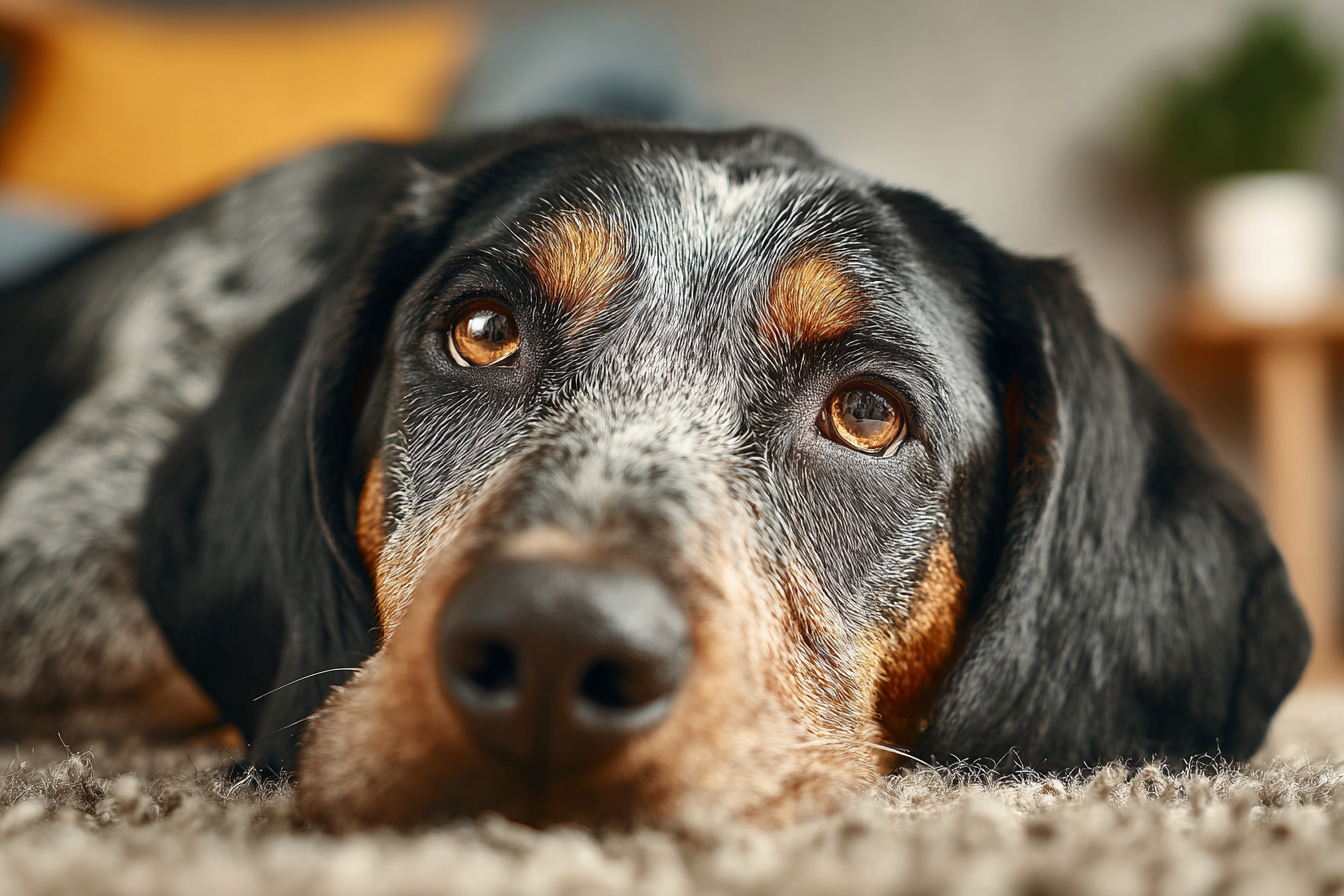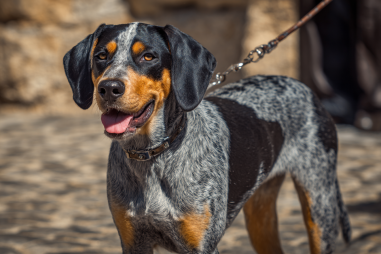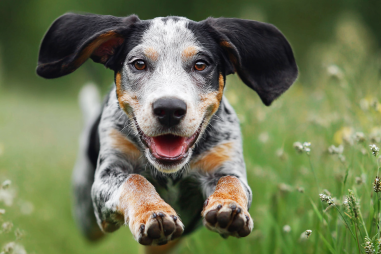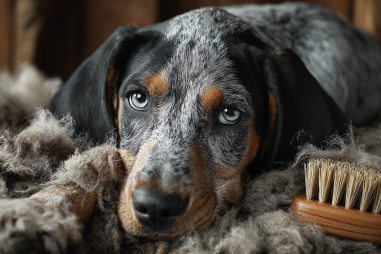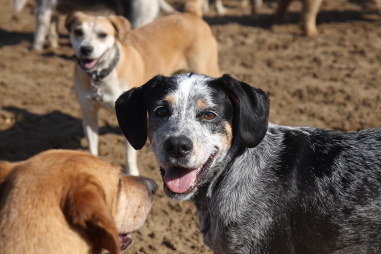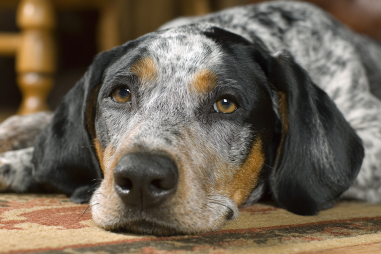When thinking about apartment living with a Bluetick Coonhound, many potential dog owners pause. This breed is well-known for its boundless energy, strong hunting instincts, and love of the outdoors. Naturally, the idea of keeping a dog with such specific needs in a small indoor space might raise some concerns. However, with the right preparation and care, Bluetick Coonhounds can indeed thrive in an apartment setting. In this article, we’ll explore the challenges and solutions that come with apartment life for this unique breed, along with tips to ensure your furry friend stays happy and healthy in a smaller space.
Challenges of Apartment Living for Bluetick Coonhounds
Bluetick Coonhounds are energetic hunting dogs originally bred for tracking and treeing raccoons. Their natural instincts and physical needs make apartment living a bit more challenging than it is for smaller, less active breeds. One of the main challenges is their high energy level. Without adequate physical and mental stimulation, these dogs can develop behavioral problems like excessive barking, destructive chewing, and restlessness.
Another significant factor is their size and strength. Bluetick Coonhounds typically weigh between 45 and 80 pounds and are quite muscular. Maneuvering a large, energetic dog in small hallways or crowded elevators can be challenging, and owners need to be mindful of communal living spaces and the comfort of neighbors. Additionally, their innate hunting instinct drives them to follow scents, which means they require close supervision during walks to prevent them from bolting or pulling on the leash.
Finally, noise sensitivity is another concern. Bluetick Coonhounds are known for their distinctive baying howl, especially when they catch an interesting scent or want to alert their owner. In an apartment setting, this can lead to complaints from neighbors if not properly managed.
Exercise and Mental Stimulation Needs
Exercise is absolutely crucial for Bluetick Coonhounds, especially when apartment living limits their physical space. These dogs need vigorous, daily exercise to burn off their large reserves of energy. Ideally, this means at least an hour of exercise each day, which can include brisk walks, runs, or hikes. Regular outings to dog parks or open spaces where your Bluetick can safely run off leash are excellent for helping your dog release pent-up energy.
Alongside physical exercise, mental stimulation is just as important. Blueticks are intelligent dogs with strong problem-solving skills. Without mental outlets, they can become bored and develop destructive behaviors. Incorporating puzzle toys, scent games, and obedience training can help keep their minds sharp and engaged. Activities like hide-and-seek or practicing tracking exercises can satisfy their natural instincts while challenging their brains.
Routine is beneficial, so try to establish consistent playtimes and training sessions daily. This not only stimulates your dog but also helps reduce anxiety and makes apartment living smoother for everyone.
Space and Environment Considerations
A Bluetick Coonhound’s ideal living environment includes enough indoor space for them to stretch out comfortably, though apartments tend to have limited room. When managing a smaller living area, it’s important to optimize the space for your dog’s comfort and safety. Provide a designated area with a cozy, appropriately sized dog bed where your Bluetick can retreat and relax after activity.
Make sure your apartment is dog-proofed, removing any items that might be hazardous if chewed or knocked over. Blueticks, being curious and adventurous, may find ways to explore cupboards or trash bins if left unsupervised.
Consider using baby gates or playpens to limit access to certain rooms, especially to prevent them from getting underfoot while you’re busy or away. While Blueticks aren’t known as extreme chewers, keeping tempting objects out of reach can prevent unwanted destruction.
Maintaining a clean and odor-free environment will also help keep your relationship with neighbors positive. Regular grooming and bathing, along with spot cleaning of any indoor accidents, are important parts of living harmoniously in close quarters.
Noise Management
One factor that can make or break the experience of apartment living with a Bluetick Coonhound is how their vocal tendencies are managed. These dogs will naturally bark and bay, especially when stimulated or excited. This can be disruptive in apartment buildings with shared walls and close neighbors.
Training your dog early to control barking is essential. Teaching commands such as “quiet” or redirecting their attention when they start to howl can be effective tools. Additionally, making sure your dog is well-exercised reduces both anxiety and boredom, which are common causes of excessive noise.
Providing background noise like a white noise machine or playing soft music can sometimes soothe your dog and prevent them from reacting to every little sound heard through the walls. Also, consider talking to neighbors and setting expectations about your dog; this openness can help create understanding and cooperation.
Tips for Successful Small-Space Living
- Establish a consistent routine: Regular feeding, exercise, and bathroom breaks help your Bluetick settle into apartment life.
- Prioritize daily outdoor activity: Make long walks or runs non-negotiable to fulfill their physical needs.
- Provide mental enrichment: Use toys, scent games, and obedience training to keep their minds active.
- Create a comfortable indoor space: Designate a quiet, comfortable spot with a bed and favorite toys.
- Practice training early: Address leash manners, barking, and basic commands to minimize disruptions.
- Socialize your dog: Expose your Bluetick to various sights, sounds, and people gradually to reduce anxiety and reactivity.
- Manage grooming: Regular brushing and cleaning help keep your apartment fresh and odor-free.
- Communicate with neighbors: Let them know about your dog and be responsive to any concerns that might arise.
Living with a Bluetick Coonhound in an apartment is not without its challenges, but with dedication and the right care, it can be a rewarding experience. Understanding your dog’s needs and making thoughtful adjustments to your lifestyle and environment will ensure your coonhound thrives indoors just as happily as they would on sprawling acreage.
Ultimately, the key to success is commitment—commitment to meeting your dog’s physical, mental, and emotional needs. If you can provide ample exercise, mental stimulation, and a calm yet engaging living space, your Bluetick Coonhound can become a well-behaved, loving companion no matter the size of your home.

